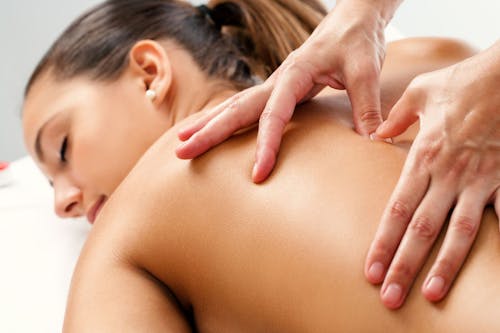Find Relief Today!
There you are, walking through the park on a sunny summer day when you unexpectedly find a hole with your foot. Before you know it, you are in agony, slumped in a crumpled heap, hoping that no one saw you slide.
So, what do you do from here? How do you know if the injury is going to go away on its own, and when do you call a physical therapist? The best way to find out is to contact us today to find out whether further treatment is needed for your sprain, strain, or ankle pain.
What’s the difference between a sprain and a strain?
This is one of the most often asked questions of a physical therapist when it comes to ankles. It's really a lot easier to distinguish between the two than you would expect.
But before we can speak about the difference between a sprain and the strain, you need to know the difference between the tendon and the ligament. Tendons are solid, fibrous tissue that attaches bone to muscle. Ligaments are related forms of strong connective tissue that link one bone to another bone.
Sprains occur when the ligaments of the joint (ankle, knee, wrist, elbow, etc.) are bent so violently that the solid connective tissues are strained or partially broken.
Usually, the joint stays in place with a sprain. Sprains can be mild, resulting in just a few minutes or hours of discomfort, or may be more severe, requiring physical therapy or even surgery.
A strain occurs when the tendons that link the muscle to the bone are stretched or slightly broken. There are two kinds of strains—acute and chronic.
Acute strains arise as a result of injury. You can slip on the ice and fall, straining the muscle in your leg when you're trying to steady yourself. Chronic strains happen when you perform the same motion over and over.
Gymnasts, tennis players, golfers, and other athletes are likely to experience strains when they are not adequately trained or stretched, or if they are not using the correct equipment.
What can physical therapy do for me?
Interestingly enough, working with a physical therapist has more advantages than just regaining your strength after the accident.
These medical professionals are highly trained movement specialists who can not only help you heal from a sprain or strain, they can help you avoid injury in the future. Physical therapists also provide drug-free pain relief that keeps you mobile and strengthens your body.
Physical therapy for a sprain or strain usually follows 3 phases. In the acute phase of injury, pain management is one of the main objectives. Extreme sprains and strains are also painful.
If surgery is required to reconnect a ligament or tendon or repair a muscle, pain control can also make a difference between a patient who works hard in therapy and someone who does not.
Your physical therapist can offer several pain management techniques—ice, heat, ultrasound, TENS, massage, and stretching. They will also show you how to perform some exercises and stretches on their own.
Your physical therapist works on repairing your injury in the second phase of physical therapy. Usually, the first two phases go hand-in-hand while your physical therapist works to help you recover mobility in the joint where the sprain or sprain occurred.
Once the injury is healed, your physical therapist can go on to helping you avoid further injury. If you've sprained a joint, you're more likely to do it again without proper therapy.
It's the same for strains. Strengthening muscles around the affected area will also protect you from having complications in the future.
So, what else should I know about sprains and strains?
As stated by Medline,
“A sprain is a stretched or torn ligament. Ligaments are tissues that connect bones at a joint. Falling, twisting, or getting hit can all cause a sprain. Ankle and wrist sprains are common. Symptoms include pain, swelling, bruising, and being unable to move your joint. You might feel a pop or tear when the injury happens.
A strain is a stretched or torn muscle or tendon. Tendons are tissues that connect muscle to bone. Twisting or pulling these tissues can cause a strain. Strains can happen suddenly or develop over time. Back and hamstring muscle strains are common. Many people get strains playing sports. Symptoms include pain, muscle spasms, swelling, and trouble moving the muscle.
At first, treatment of both sprains and strains usually involves resting the injured area, icing it, wearing a bandage or device that compresses the area, and medicines. Later treatment might include exercise and physical therapy.”
If you think you may be in need of physical therapy intervention for your sprain or strain, don’t hesitate to contact us. One of our physical therapists will evaluate the injured area to determine the best course of treatment for your needs.
Discover fast relief today
For more guidance or to learn more about the impact of physical therapy on sprains and strains, please contact Synergy Physical Therapy & Sports Medicine today.



